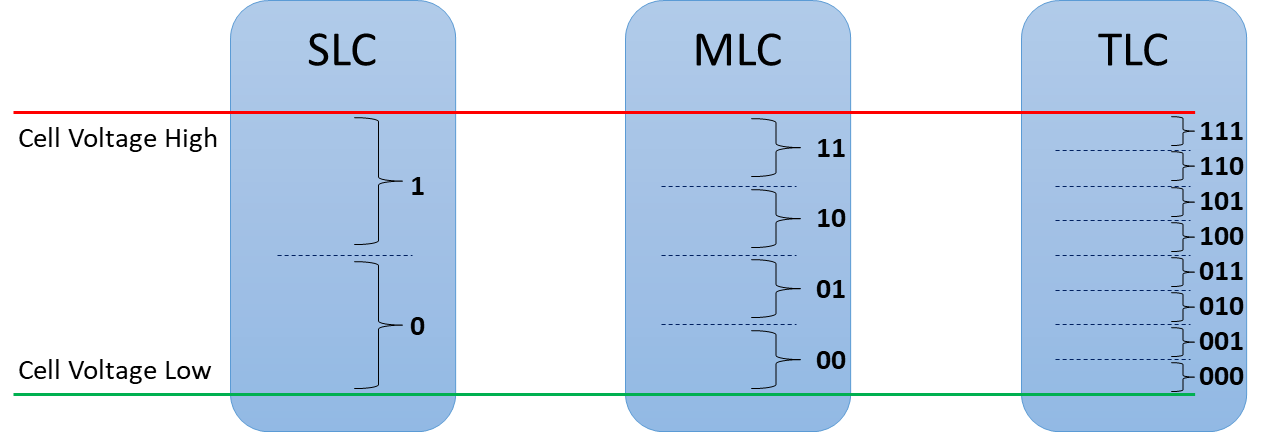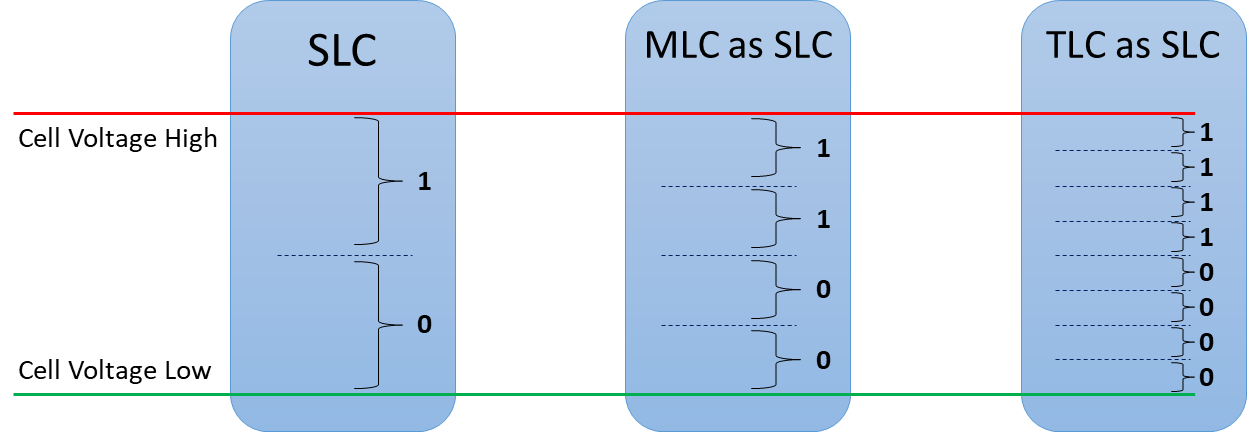
There are two primary types of non-volatile flash memory devices in use today: NOR and NAND flash. Below we look at the differences between NAND and NOR flash devices, and explore types of NAND flash, including SLC, MLC, and TLC.
What is NOR Flash Memory?
NOR flash is most often used in applications where individual bytes of data need to be written and read, and is most often used where random access and execute-in-place access techniques are required. As each read access takes the same amount of time, sequential read access is no faster than random access. Erase/program cycles can often be long.
Today’s NOR flash devices are available with capacities in the megabits and low gigabits range. Depending on the device, individual bytes or sectors must be erased before writing data, with erase/program speeds typically below 1 MB/s.
NOR flash has high reliability, and is typically rated to maintain data integrity for 20 years or more.
What is NAND Flash?
NAND flash is arranged in blocks in which data can be written, read, or erased. During sequential reads, the latency in receiving the first byte of data is much higher than with NOR flash, but then sequential bytes of data are retrieved much faster than with NOR flash. When writing data, a full block of data can be transferred to the NAND flash device quickly, and then the block is written in a single operation. Effective read and write speeds, as well as block erase times, are much faster than NOR Flash.
NAND flash is best suited to systems performing large sequential data access, which maps well to today’s use as the main storage device for computing systems and operating systems with block-oriented storage subsystems.
Due to the physical silicon design of the flash cells, a NAND flash cell occupies approximately 40% less silicon area than a NOR flash cell, for a similar process technology.
SLC NAND Flash Memory
Single Level Cell (SLC) technology stores one bit of data in each cell. The cell stores either a 0 or a 1. SLC technology offers the highest reliability and endurance of NAND flash technologies.
MLC and TLC NAND Flash Memory
Multi-Level Cell (MLC) technology stores more than one bit in each cell, resulting in an increase in data density and thus, higher capacity than SLC technology. Today, 2-bit, 3-bit and even 4-bit per cell MLC flash technology is very common. As each cell stores more than just one bit, the voltage margin separating a cell’s different bit interpretations is reduced, making MLC technology is more sensitive to data errors when the charge voltage within a cell changes over time. Accordingly, MLC flash technology has much lower endurance than SLC flash technology.
Triple Level Cell (TLC) is a subset of MLC, specifically for 3-bit per cell functionality.

Figure 1: SLC, MLC, TLC Bit Decoding
Today it is becoming increasingly more difficult to source high-capacity NAND flash SSDs with SLC technology. Instead, many vendors are achieving SLC reliability and endurance using multiple bit-states of MLC flash arrays to mimic the reliability of SLC flash arrays. By using multiple MLC bit-states per effective SLC bit, the effective capacity of the flash array in SLC mode is less than the raw MLC capacity.

Figure 2: MLC Flash used in SLC Mode
Read more about NAND and NOR flash devices in our white paper, Flash Memory Lifespan and Reliability: Examining the Long-Term Impacts of Reads, Temperature, and Other Factors.